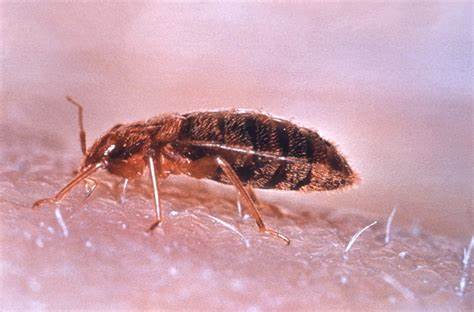Have you ever found a small, reddish-brown insect crawling in your home and immediately feared it might be a bed bug? Bed bugs are a nightmare for homeowners, but sometimes what you think is a bed bug might actually be another harmless (or less harmful) insect. Identifying the bug correctly is crucial because it determines the action you should take.Discover how to identify bugs that look like bed bugs with our guide to common bed bug lookalikes and avoid confusion.
Why It’s Important to Identify Bed Bug Lookalikes
When you spot an unfamiliar insect in your home, it’s natural to worry about the possibility of a bed bug infestation. However, there are many other insects that closely resemble bed bugs. Mistaking these bugs for bed bugs can lead to unnecessary stress and costly treatments. Understanding the differences between bed bugs and their lookalikes can help you determine whether you need professional pest control or just a simple DIY solution.
Common Bugs That Look Like Bed Bugs
Several insects share physical characteristics with bed bugs, making them easy to confuse. Here’s a closer look at some of the most common bed bug lookalikes:
Carpet Beetles
Carpet beetles are one of the most common bugs that are mistaken for bed bugs. These tiny insects are round or oval-shaped and can range in color from black to yellow, brown, or even white. Unlike bed bugs, carpet beetles are not bloodsuckers. Instead, they feed on natural fibers like wool, silk, and leather, as well as stored food products.
- Size and Shape: Carpet beetles are slightly smaller than bed bugs, measuring about 2 to 3 millimeters long.
- Behavior: While bed bugs tend to hide in mattresses and furniture, carpet beetles are often found in carpets, clothing, and pantry items.
- Harm: Carpet beetles don’t bite, but their larvae can cause damage to fabrics and food.
Bat Bugs
Bat bugs are so similar to bed bugs that even entomologists have a hard time telling them apart without a microscope. Both bat bugs and bed bugs feed on blood, but bat bugs typically prefer the blood of bats.
- Size and Shape: Bat bugs are almost identical in size and shape to bed bugs, ranging from 5 to 7 millimeters long.
- Behavior: Bat bugs are usually found in areas where bats roost, such as attics. If bats are no longer present, bat bugs may move into living spaces in search of new hosts.
- Harm: Like bed bugs, bat bugs can bite humans, causing itchy welts. However, controlling bat bugs often involves removing bats and sealing entry points, rather than treating your home for bed bugs.
Booklice
Booklice are tiny insects that are often mistaken for bed bug nymphs because of their similar size and color. However, booklice are harmless and do not feed on blood.
- Size and Shape: Booklice are much smaller than bed bugs, measuring only 1 to 2 millimeters long. They are usually pale or translucent, making them appear almost colorless.
- Behavior: Booklice are commonly found in damp, humid areas, such as basements, bathrooms, or around leaky windows. They feed on mold, mildew, and other organic material.
- Harm: Booklice do not bite or cause damage to property. They are mainly a nuisance and can be controlled by reducing humidity and removing their food sources.
Spider Beetles
Spider beetles are another common bed bug lookalike. These insects have a round body and long legs, which can make them appear similar to bed bugs at first glance.
- Size and Shape: Spider beetles are typically about 1.5 to 3.5 millimeters long. They have a distinctive humpbacked appearance and are often reddish-brown or black.
- Behavior: Spider beetles are often found in stored food products, such as grains, cereals, and dried fruits. They can also infest bird nests and rodent burrows.
- Harm: Spider beetles do not bite humans, but they can contaminate food supplies, making them a concern in kitchens and pantries.
Fleas
Fleas are well-known pests that are often confused with bed bugs because they also feed on blood and cause itchy bites. However, fleas are more commonly associated with pets.
- Size and Shape: Fleas are smaller than bed bugs, measuring about 1.5 to 3 millimeters long. They have a flattened body and are usually reddish-brown in color.
- Behavior: Fleas are typically found on pets, in carpets, and on furniture. They are known for their jumping ability, which helps them move quickly between hosts.
- Harm: Fleas can cause itchy bites and transmit diseases to both pets and humans. Controlling fleas usually involves treating both the pets and the home.
Cockroach Nymphs
Cockroach nymphs are immature cockroaches that can look similar to bed bugs, especially when they are newly hatched.
- Size and Shape: Cockroach nymphs are about the same size as bed bugs, measuring 2 to 5 millimeters long. They are often light brown or tan in color.
- Behavior: Cockroach nymphs are typically found in kitchens, bathrooms, and other areas where food and moisture are present. Unlike bed bugs, they are not attracted to human blood but to food scraps and waste.
- Harm: Cockroaches can spread bacteria and allergens, making them a health concern in homes. Unlike bed bugs, controlling cockroaches often involves addressing sanitation and moisture issues.
How to Identify Bed Bugs and Their Lookalikes
Identifying whether the insect in your home is a bed bug or a lookalike can be challenging, but there are a few key differences to look for:
Check the Size and Shape
Bed bugs are small, about the size of an apple seed, and have a flat, oval shape. Many lookalikes, like carpet beetles and spider beetles, are rounder or more elongated.
Examine the Color
Bed bugs are typically reddish-brown. If the bug you’re looking at is a different color, like black or translucent, it’s likely a different species.
Observe the Behavior
Bed bugs are nocturnal and prefer to hide in mattresses, bed frames, and furniture. If you see the insect during the day or in different areas of your home, it may not be a bed bug.
What to Do If You Find a Bed Bug Lookalike
If you find an insect that you think might be a bed bug, it’s important not to panic. Here’s what you can do:
Capture the Insect
Carefully capture the insect in a sealed container so you can show it to a pest control professional for identification.
Contact a Pest Control Expert
If you’re unsure whether the insect is a bed bug, it’s best to contact a pest control expert. They can accurately identify the insect and recommend the appropriate treatment.
Take Preventative Measures
If you’ve identified a bed bug lookalike, take steps to prevent future infestations. For example, reduce humidity to prevent booklice, or store food in airtight containers to avoid spider beetles.
Conclusion
Understanding the differences between bed bugs and their lookalikes can save you a lot of time, stress, and money. While it’s easy to panic at the sight of a small insect, taking the time to identify it correctly can help you take the right steps to protect your home. Whether it’s a harmless carpet beetle or a more concerning bat bug, knowing what you’re dealing with is the first step to keeping your home pest-free. Remember, if you’re ever in doubt, don’t hesitate to seek professional advice.







